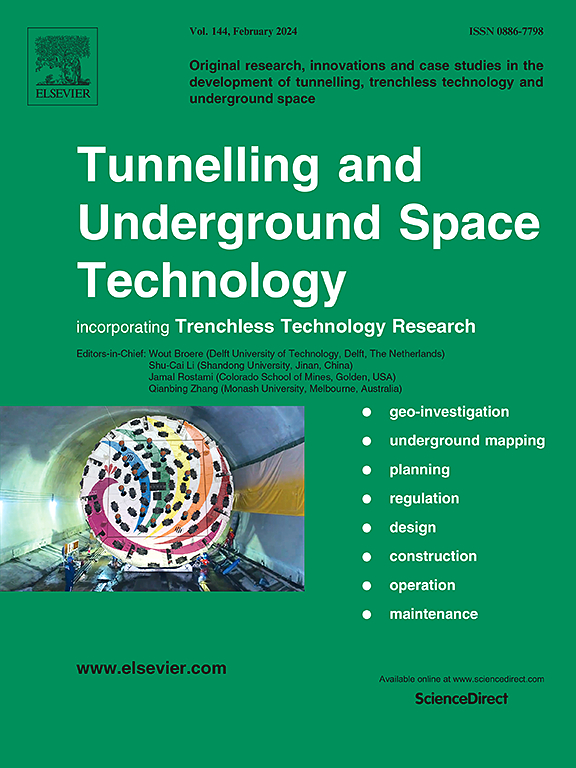Analysis of the hygrothermal conditions of the Vinalopó Medio cave houses (Alicante, Spain)
IF 6.7
1区 工程技术
Q1 CONSTRUCTION & BUILDING TECHNOLOGY
引用次数: 0
Abstract
Traditional excavated houses possess significant potential for adaptation to contemporary lifestyles while addressing sustainability challenges in construction. In the Vinalopó Medio region of Alicante, Spain, there exists a considerable number of historic cave dwellings that remain inhabited, yet there is a dearth of studies on these structures. It has become essential to investigate the indoor environmental conditions to identify necessary improvements in three selected case studies. The analysis of indoor and outdoor temperature and relative humidity was conducted at various times throughout the year. To draw robust conclusions, a comparative analysis with similar previous studies is presented, utilising Givoni’s psychometric diagram. The findings indicate that the interior conditions of the caves are generally close to acceptable comfort levels, with an average temperature of 20.4 °C and relative humidity of 54.7 %. This suggests that only minimal internal heating is required during the winter months. Furthermore, natural lighting levels were measured in one of the case studies, revealing very low values that necessitate the consideration of systems to enhance the entry of natural light into the interiors. Energy efficiency was assessed by evaluating the heating and cooling energy demands alongside an overall estimation of non-renewable primary energy consumption and carbon dioxide (CO2) emissions. The results were compared with those of a conventional house built during a similar period in the same area, demonstrating that the energy demand for cooling in the cave houses was reduced by 77.50 % compared to the conventional dwelling. To enhance energy efficiency, indoor comfort and natural light levels, it is proposed that systems be installed that respect the heritage of this excavated architecture. Such interventions would enable the achievement of optimal energy performance, resulting in CO2 emissions of 5.60 kgCO2/m2 per year and non-renewable primary energy consumption of 32.80 kWh/m2 per year.

西班牙阿利坎特Vinalopó Medio洞穴房屋的热湿条件分析
传统的挖掘房屋在解决建筑可持续性挑战的同时,具有适应当代生活方式的巨大潜力。在西班牙阿利坎特(Alicante)的Vinalopó Medio地区,有相当数量的历史窑洞仍然有人居住,但缺乏对这些结构的研究。必须调查室内环境条件,以便在三个选定的案例研究中确定必要的改进。在全年不同时间对室内外温度和相对湿度进行了分析。为了得出可靠的结论,本文利用Givoni的心理测量图,与以前的类似研究进行了比较分析。结果表明,洞穴内部条件基本接近可接受的舒适水平,平均温度为20.4℃,相对湿度为54.7%。这表明在冬季只需要很少的内部供暖。此外,在一个案例研究中测量了自然采光水平,揭示了非常低的值,需要考虑系统来增强自然光进入室内。能源效率是通过评估供暖和制冷能源需求以及对不可再生一次能源消耗和二氧化碳(CO2)排放的总体估计来评估的。将结果与同一地区同一时期建造的传统房屋进行了比较,结果表明,与传统住宅相比,窑洞房屋的冷却能源需求减少了77.50%。为了提高能源效率,室内舒适度和自然光水平,建议安装尊重挖掘建筑遗产的系统。这些干预措施将使能源性能达到最佳,每年二氧化碳排放量为5.60千克二氧化碳/平方米,不可再生的一次能源消费量为32.80千瓦时/平方米。
本文章由计算机程序翻译,如有差异,请以英文原文为准。
求助全文
约1分钟内获得全文
求助全文
来源期刊

Tunnelling and Underground Space Technology
工程技术-工程:土木
CiteScore
11.90
自引率
18.80%
发文量
454
审稿时长
10.8 months
期刊介绍:
Tunnelling and Underground Space Technology is an international journal which publishes authoritative articles encompassing the development of innovative uses of underground space and the results of high quality research into improved, more cost-effective techniques for the planning, geo-investigation, design, construction, operation and maintenance of underground and earth-sheltered structures. The journal provides an effective vehicle for the improved worldwide exchange of information on developments in underground technology - and the experience gained from its use - and is strongly committed to publishing papers on the interdisciplinary aspects of creating, planning, and regulating underground space.
 求助内容:
求助内容: 应助结果提醒方式:
应助结果提醒方式:


